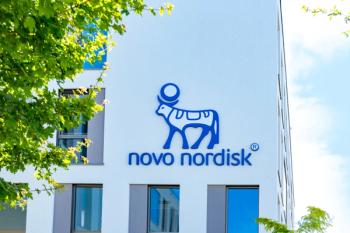
- Pharmaceutical Executive-09-01-2021
- Volume 41
- Issue 9
Startup Launch Guide: Avoiding 10 Common Pain Points
With opportunity and risk lurking in equal measure, today’s key considerations for biopharma startups when building their leadership teams and product go-to-market strategies are outlined.
Startup and small-sized biopharma companies must navigate an array of challenges when they plan to go to market with their new drug—whether they already have a few products on the market or are launching their first drug. Approximately 40% of new drugs launched in the past 15 years underperform financial forecasts by more than 20%1. The breakdown can happen at many different points along the commercial journey. Taking precautions along the way can help companies avoid pitfalls and better leverage market opportunity.
1. Commercialization team: Veteran leaders or startup doers?
Many startups build teams of highly skilled and experienced leaders from large pharma companies only to realize later that while these individuals are great leaders, they are no longer accustomed to rolling up their sleeves to perform the critical business activities needed for market success.
The key step in building a high-functioning commercialization team is to be mindful of the skillsets needed internally versus those a company might leverage from external sources—think less about leaders and more about “leader doers” who have a mix of small and large company experiences. These individuals will understand how to leverage a process learned in a larger organization while moving efficiently to the end goal. Discard the notion that a good candidate has to already be a therapeutic expert. Diversity of backgrounds and therapeutic experiences typically result in the most creative solutions.
2. Leadership: Does good science sell itself?
All too often, we encounter founders who are exceptionally gifted scientists, researchers, or product innovators. At the end of the day, a startup is about bringing products to market, and in today’s complex market, good science is not enough.
During the transition from Phase 2 to Phase 3, it is best for a new leader to take the reins. This does not mean a company is abandoning great scientific advancement, but it does mean it is prioritizing the business acumen required to build and execute a successful product commercialization strategy. With success, it will be able to fund the scientific exploration that delivers on the vision and mission the founder originally had for the company.
3. Market: What is the true market opportunity?
True innovation often finds solutions to problems that are not well understood or even documented. This can mean a product is entering a market where no market previously existed. Chief commercial officers (CCOs) working in uncharted waters need to force themselves to build a situation assessment of the target market today and memorialize assumptions about the market. Such a document will inform and guide a strategic plan going forward and identify gaps in knowledge that, when answered, might serve to define additional go-to-market requirements such as clinical evidence, packaging nuisances, and messaging strategies. Especially in unestablished markets, the application of experience from other markets can help to chart a strategic course for commercialization.
4. Sales: Do personal relationships matter in the digital age?
During the COVID-19 pandemic, virtual selling kicked into high gear. This way of selling helped to sustain many organizations’ ability to engage customers at all levels. While there is no doubt that virtual engagement is here to stay, relationships still matter. CCOs should not lose sight of the power of in-person selling. Customer relationships are built over time and in-person engagement facilitates this growth. Such activities also allow for engagement of an entire treatment team, many members of whom are more essential to serving the needs of the patient than the healthcare professional. Being face to face with customers to see their expressions and body language helps determine the appropriate balance of how to best engage with them in the most meaningful manner.
5. Reaching patients: Do DTC TV ads help a launch?
Who doesn’t want to film a TV ad? While it can be a lot of fun, decision makers should first assess if it truly makes sense for the brand. DTC TV advertising can seem efficient, especially for small organizations trying to get the word out; however, it is also expensive to produce an ad and submit it for FDA review, as well as purchase the required media placements to break through the competitive noise. In today’s environment, there are more sophisticated digital solutions.
If your heart is set on DTC TV, identify a key market share performance milestone to align with a decision point—the point when you will evaluate if DTC TV is right for the brand. For instance, when the product has captured a reasonable share of the market without DTC TV or the brand has exceeded particular financial milestones.
6. Boards of directors: How to best engage and leverage a board?
Just as a company evolves from a clinical organization to a commercial one, a board of directors should also evolve over time. Great boards view themselves as a partner and advocate. They ask good questions, pressure-test ideas, suggest alternative solutions, and make introductions to contacts and former colleagues when specialized support for problem solving is needed. The more diversity on a board, the more functional and supportive they can be of the organization. Every near-term startup commercial organization requires true commercial expertise on its board to best support fruitful commercial conversations and ensure time is not wasted educating the board on commercial fundamentals.
7. The U.S. market: To build or not to build?
It seems logical that if a company has achieved success in one market it might want to replicate that success in another market. Before taking such a big leap, however, it is essential to understand potential hurdles. Every market is different and presents unique opportunities and challenges that, if misunderstood, might jeopardize the overall success of a product launch. For instance, for many diseases the treatment algorithms employed in Europe are different than those used in the U.S., the path to seeing a specialist can be different, and the coverage and reimbursement policies can be more complex, just to name a few.
On-the-ground partners are essential to evaluating a perceived market opportunity, accelerating a company’s ability to establish a presence, and implementing a plan for future success.
8. Business results: Is this a billion-dollar market opportunity?
Statements about the size of a market need to be based in real-time and on thoughtful analysis of the available evidence. This does not mean a company has to commission a $750,000 forecasting exercise, but it does mean it should apply a logical and thoughtful approach to estimates of market size and opportunity.
Understanding the path to utilization is a key component in refining a company’s estimated market size and informs product strategy. This process maps how the available patient base shrinks from the time of origination, evaluation, and diagnosis, through class and brand choice and product fulfillment. Not only does this information highlight drivers and barriers to product use, but it also helps to identify the key leverage points where leaders can intervene to influence a decision.
9. Strategists: Not all consultants are the same
Leaders need business partners who have been in similar situations to help maximize their efficiency and preparedness. Consultants with a mix of hands-on experience, including working in-house at pharma and startup biotech companies, understand the type of support a team will need as the organization grows and the timing of when it will be needed. Compressed timelines and high-pressure situations make executional strategists ideal partners. They not only quickly understand the big picture but are willing and able to get in the weeds by rolling up their sleeves and execute on your behalf.
10. Commercialization strategy: Isn’t it just another way to say marketing?
Marketing is just one subset of the commercial strategy puzzle. Commercialization strategy is the result of how business insights from different functional areas come together to define four to five product objectives that leaders will execute against at launch. It defines what they know about the market today and the path they will follow to seamlessly and successfully disrupt the status quo at launch.
Reference
Vicki Morgan and Sarah Murchison, managing directors of
Articles in this issue
about 4 years ago
Pharmaceutical Executive, September 2021 Issue (PDF)about 4 years ago
When Innovation Outpaces HTA, Access Struggles to Keep Upabout 4 years ago
Doubling Down On Innovation, Recoveryabout 4 years ago
Developing a Product Launch Strategy for an Orphan Drugabout 4 years ago
Investing for Success: Finding the Right Launch Balanceabout 4 years ago
Rethinking Obesity: Wegovyabout 4 years ago
Fear Factor: Palforziaabout 4 years ago
Formidable Option: Orgovyxabout 4 years ago
No Small Feat: Nurtec ODTabout 4 years ago
‘Rare’ Reinforcement: EvrysdiNewsletter
Lead with insight with the Pharmaceutical Executive newsletter, featuring strategic analysis, leadership trends, and market intelligence for biopharma decision-makers.





